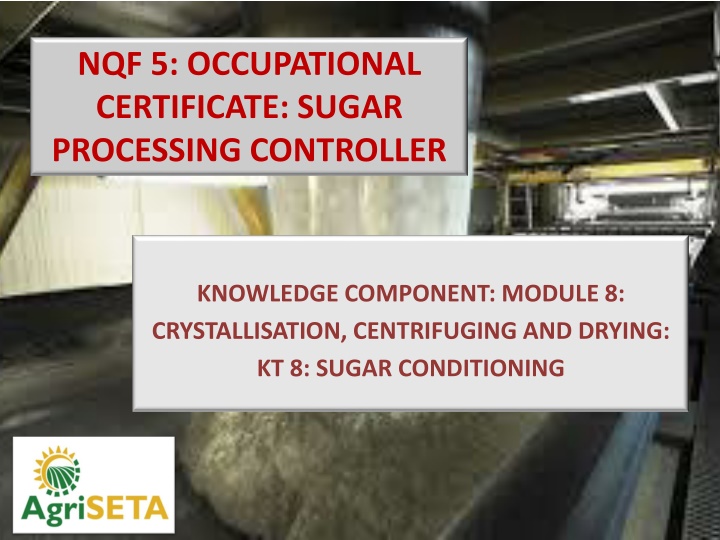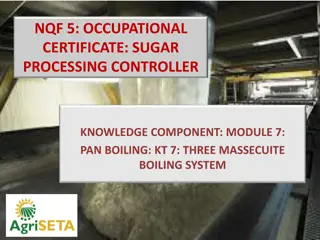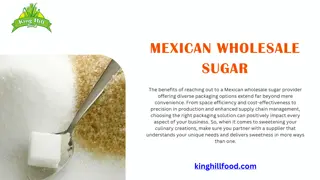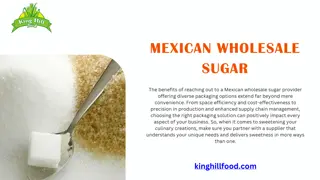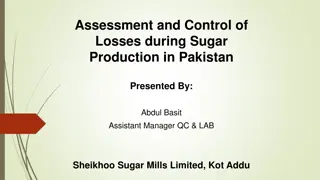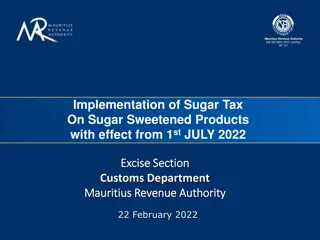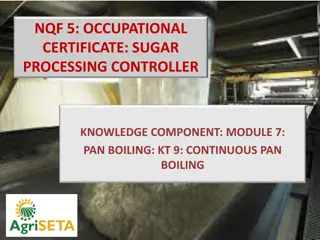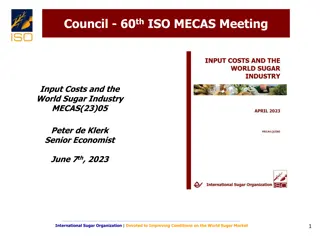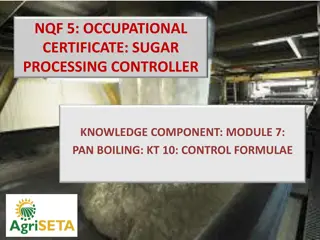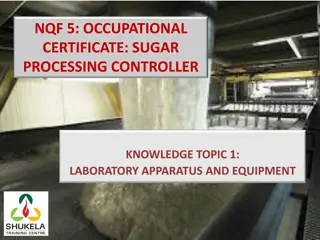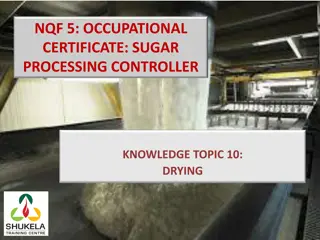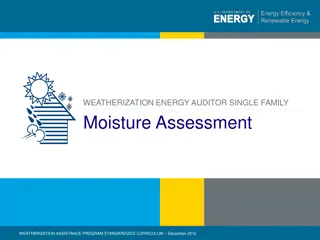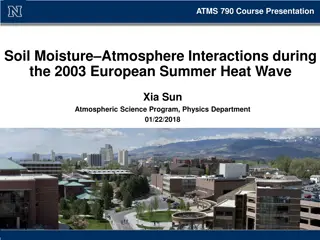Sugar Processing Controller Knowledge: Conditioning and Moisture Control
Understanding the importance of sugar conditioning in preventing caking during transport and storage. Factors affecting sugar conditioning efficiency include temperature, air flow, crystal size, feed sugar moisture, and more. Learn about the techniques and processes involved in sugar conditioning to maintain sugar quality and prevent moisture-related issues.
Download Presentation

Please find below an Image/Link to download the presentation.
The content on the website is provided AS IS for your information and personal use only. It may not be sold, licensed, or shared on other websites without obtaining consent from the author.If you encounter any issues during the download, it is possible that the publisher has removed the file from their server.
You are allowed to download the files provided on this website for personal or commercial use, subject to the condition that they are used lawfully. All files are the property of their respective owners.
The content on the website is provided AS IS for your information and personal use only. It may not be sold, licensed, or shared on other websites without obtaining consent from the author.
E N D
Presentation Transcript
NQF 5: OCCUPATIONAL CERTIFICATE: SUGAR PROCESSING CONTROLLER KNOWLEDGE COMPONENT: MODULE 8: CRYSTALLISATION, CENTRIFUGING AND DRYING: KT 8: SUGAR CONDITIONING
Why does Dry Sugar Cake? Equilibrium Relative Humidity: Refined sugar has an ERH of 76%. If the atmospheric humidity is above this, the sugar will absorb moisture. If the atmospheric humidity later drops below 76% the sugar will lose excess moisture, resulting in caking Moisture Migration Temperature gradients in sugar cause moisture to migrate to cold areas. Moisture loss results in: Surface crystallisation Intercrystalline bridging Caking
Sugar Conditioning Sugar conditioning is practised to reduce the moisture content of refined sugar so as to prevent caking during transport/storage. Sugar is conditioned in a silo where a bed of sugar moves from top to bottom while warm air is passed from the bottom to the top.
Conditioning Data Unconditioned sugar from the sugar drier Oven moisture = 0.03% (Measures the Free and some of the Bound Moisture) Karl-Fischer Moisture = 0.05% - 0.10% (Measures: Free, Bound and Inherent Moisture) Conditioned sugar Karl-Fischer Moisture 0.05% (Total Moisture) Conditioning Air Temperature = 42 C - 48 C Relative Humidity 20% Flowrate = 50 litres.min-1.ton sugar-1
Conditioning Data (cont.) Typical silo Sugar hold up = 1200tons Retention time = 48 72 hours Performance measures Test tube caking test Karl Fischer moisture Conditioning removes BOUND moisture
Factors Affecting Conditioning Temperature Temperature enhances diffusion and crystallisation. Air Flow & Condition Good distribution is required without overloading the dust extraction system. Crystal Size & Distribution Smaller crystals conditions faster but cake easier. Refiners in USA sieve their sugar to remove fines for this reason. Low co-efficient of Variation improves conditioning and lowers caking propensity (i.e. tendency to cake). Low conglomerate count also aids conditioning. Feed Sugar Moisture The quantity of bound moisture and the nature of the amorphous layer in the feed sugar determines the conditioning rate.
Factors Affecting Conditioning A Typical Conditioning Curve
